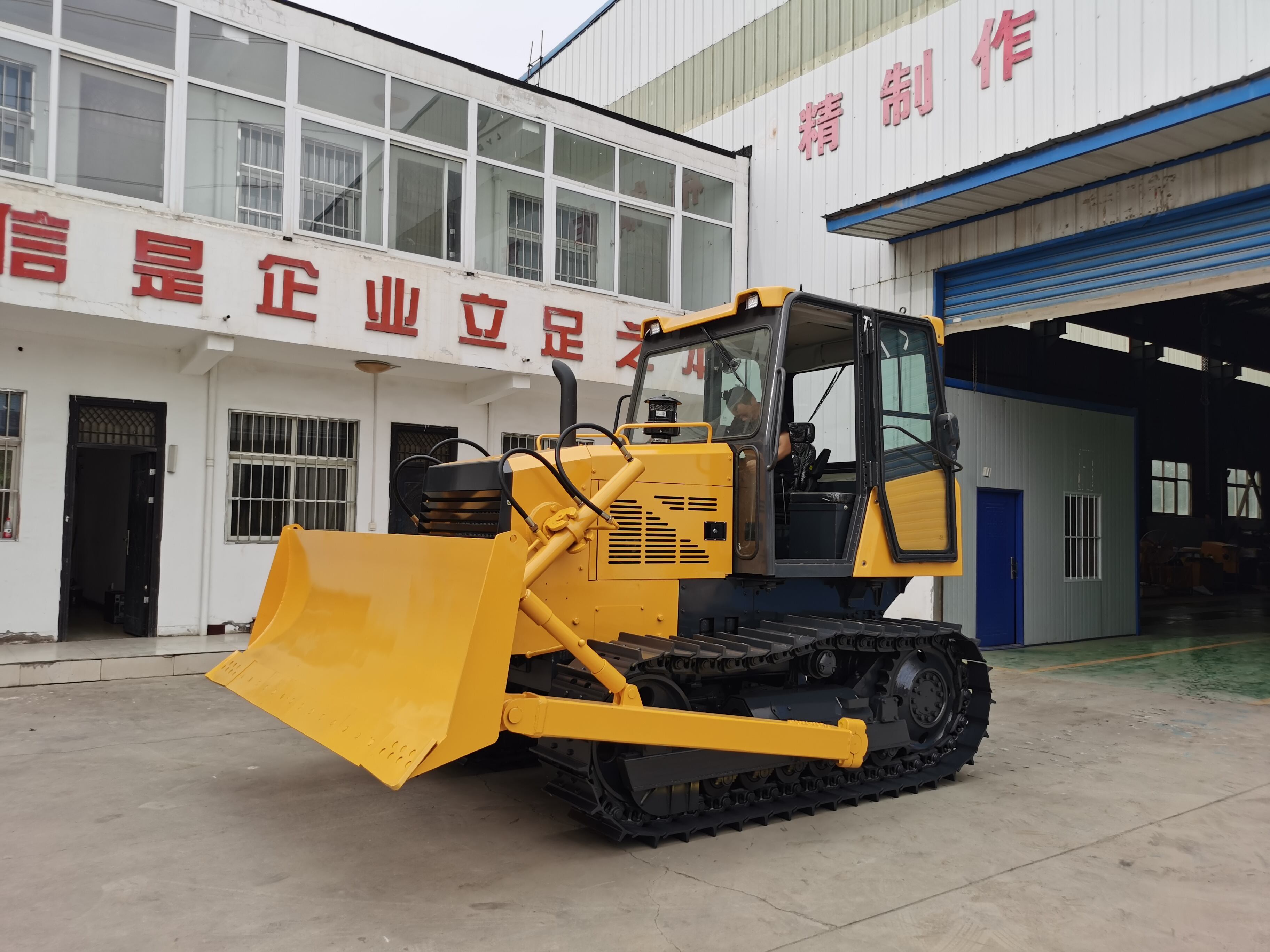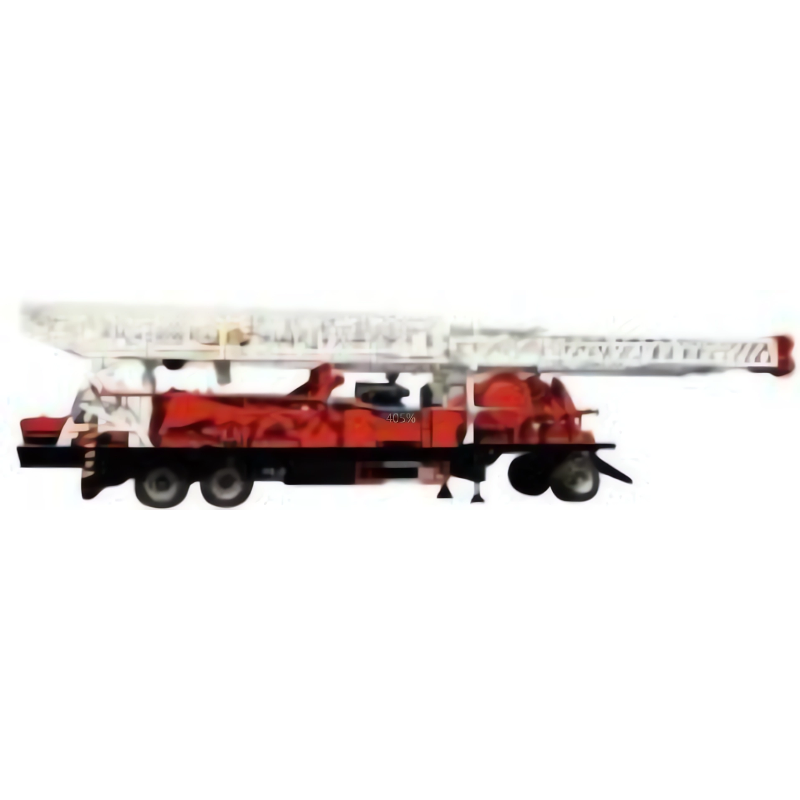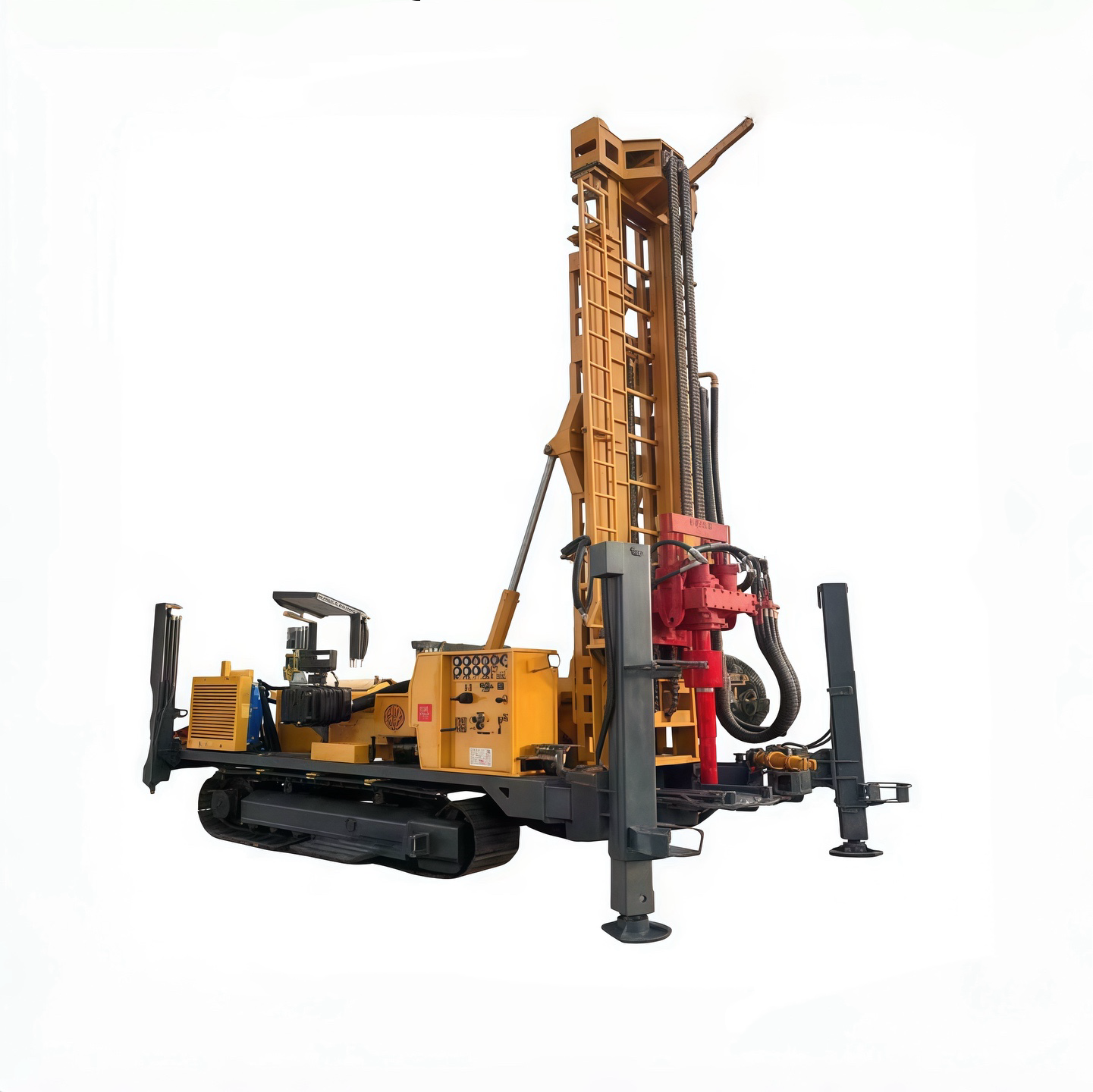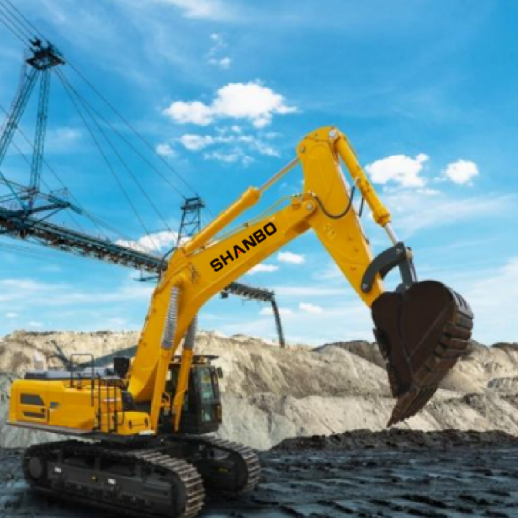What Are the Most Commonly Replaced Bulldozer Parts
Critical Bulldozer Components Requiring Frequent Replacement
Knowing which parts on a bulldozer need replacing regularly makes all the difference when it comes to keeping operations running smoothly and getting work done efficiently. The blades, tracks, hydraulic cylinders these are the ones that take the biggest beating from day to day. They get worn down fast because bulldozers push through dirt, rocks, and debris constantly throughout their shifts. That's why doing regular checks matters so much. When technicians spot problems early and replace worn components before they fail completely, companies save thousands in repair bills and avoid those frustrating stoppages where nothing gets accomplished while waiting for parts or repairs. A well maintained bulldozer just works better overall at construction sites.
Shanbo is a leading manufacturer of bulldozers, committed to delivering powerful and reliable machinery for heavy-duty applications. In addition to producing complete bulldozer units, Shanbo also provides a comprehensive range of genuine replacement parts, ensuring seamless compatibility and consistent performance.
Undercarriage Wear Parts: Rollers, Idlers & Sprockets
Undercarriage wear significantly affects bulldozer performance and productivity, often attributing to over 50% of a dozer's maintenance costs. The roles of rollers, idlers, and sprockets are critical; they support the bulldozer's weight and assist in mobility.
Routine inspections every 250 operating hours can help identify wear patterns and allow for timely replacements. Studies have shown that maintaining these components can drastically reduce operational costs and maximize bulldozer efficiency.
- Rollers: Rollers are crucial for stabilizing the bulldozer during movement. Without them, the tracks wouldn't move as smoothly, and undue stress would be placed on the machine.
- Idlers: Positioned at the front and back of tracks, idlers manage tension, preventing track derailment and ensuring smooth operation across varied terrains.
- Sprockets: Utilizing engine power, sprockets facilitate the forward and backward movement of tracks, critical for maneuverability.
Track Chain Systems in Crawler Bulldozers
The track chains on crawler bulldozers give those machines their stability and grip when moving through tough terrain, so they're pretty much indispensable parts. Mechanics generally recommend checking those track links for signs of wear around every 500 operating hours before things start going south. Neglecting this checkup can spell disaster down the road, leading to expensive breakdowns nobody wants to deal with during a project deadline. Lubrication matters too, folks often overlook it but poor lubrication alone might cut the lifespan of those track chains by nearly half according to some studies we've seen. Keeping all these systems running smoothly makes all the difference when pushing dirt or handling other heavy duty jobs on construction sites where reliability isn't just nice to have, it's absolutely necessary for getting work done on time.
- Inspection: Checking for wear and tear in track links can preemptively address issues before they escalate.
- Lubrication: Maintain lubrication levels effectively to ensure longevity of the track chains and enhance performance.
- Stability & Traction: Providing the necessary grip on varied terrains, track chains are instrumental in preventing slips and ensuring task precision.
Blade Cutting Edges and End Bits
The front edges and corner sections of bulldozer blades take a real beating from all that contact with dirt and rocks. Most operators find they need to swap these worn-out parts roughly every 200 to 300 hours of work to keep things running right. There are various material options and special coating methods available now that actually make these parts last much longer than before. Some contractors report getting almost twice as many hours out of blades treated with certain hard facing techniques. Keeping these critical components in good shape isn't just about avoiding downtime it also means the machine can push through tough terrain without losing power or control.
- Wear-Due to Ground Engagement: Understand how much abrasion these components face, which necessitates consistent checks.
- Replacement Schedule: Timely replacements are recommended within the specified operational hours for sustained efficiency.
- Upgraded Materials: Explore hardfacing techniques and advanced materials to prolong the lifespan of blade components and maximize productivity.
Understanding the intricacies of these critical components and adhering to maintenance schedules inherently benefits performance and functionality, ensuring bulldozers continue to serve as reliable workhorses on any construction site.

Hydraulic System Vulnerabilities in Dozer Operations
Cylinder Rebuilds for Blade Control Systems
The hydraulic cylinders play a major role when it comes to controlling blades on bulldozers during operation. According to some field data, around 30 percent of all problems with hydraulic systems actually start right here at the cylinder level, making them pretty critical for keeping machines running reliably day after day. Most experienced operators recommend rebuilding these components approximately every five thousand hours of work time. This regular maintenance helps cut down on unexpected breakdowns and keeps the overall life expectancy of the heavy equipment much longer than if neglected.
Regular inspections are crucial; signs of leaks, external damage, or unusual operation could imply wear or more severe internal issues, necessitating urgent attention to maintain the efficiency of blade movements in various terrains.
Common Hydraulic Pump Failures
Hydraulic pump failures can lead to significant operational disruptions, resulting in costly repairs and prolonged downtime. These pumps are essential for generating the pressure needed to move hydraulic fluid through the system, and maintaining them is crucial to avoid complete machinery failure.
Regular filtration and fluid changes are vital preventive measures; research shows that approximately 75% of pump issues arise from dirt contamination. Implementing a maintenance schedule can notably enhance pump reliability, potentially cutting unexpected failures by 40%, thus safeguarding the bulldozer's overall functionalities.
Valve Assembly Maintenance Cycles
The maintenance of valve assemblies is a critical aspect of ensuring optimal hydraulic performance. These components regulate the flow and pressure of hydraulic fluid, directly affecting the bulldozer's attachments' functionality. Routine checks and maintenance every 1,000 hours are recommended to avert system losses and ensure consistent operational efficiency.
Replacing worn valves and making precise adjustments can lead to improved performance, with studies suggesting an operational cost reduction of up to 15%. Proper valve maintenance not only streamlines bulldozer attachments but also contributes to the machine's long-term reliability and effectiveness.
Getting a handle on those weak spots in hydraulic systems lets maintenance teams get ahead of problems before they really mess up dozer operations. Things like rebuilding cylinders or fine tuning valves aren't just routine tasks but actually critical for keeping these machines running efficiently over time. When operators tackle these issues early on instead of waiting for breakdowns, it makes all the difference in daily operations. Equipment stays reliable longer, downtime drops significantly, and repair bills shrink down considerably. Most experienced mechanics know that an ounce of prevention here saves pounds of headache later on site.
Engine Components With High Replacement Rates
Understanding engine components with high replacement rates is crucial to preventing frequent downtimes and ensuring optimal bulldozer performance. By addressing areas prone to wear and tear, operators can maintain efficiency and avoid costly repairs.
Turbocharger Failure Patterns
Turbochargers play an essential role in enhancing engine efficiency but often face issues related to overheating and contamination. To prolong their lifespan, regular inspection and cleaning every 250 working hours are advisable.
It has been observed that approximately 50% of premature turbocharger failures are due to oil contamination. Hence, monitoring boost pressure can provide insights into turbocharger health, as deviations often signal mechanical problems requiring attention.
Diesel Fuel Injector Lifespan
The health of diesel engines really depends on those fuel injectors doing their job right. Most folks find that these components last somewhere between 5,000 and 10,000 hours before needing attention. When things start going wrong, drivers often notice rough idling or see more smoke coming out than usual from the exhaust pipe. Catching these problems early saves a ton of money down the road. According to what many mechanics have observed over years in the field, certain fuel additives actually help extend how long injectors stay functional. These products work by reducing buildup inside the system while also making sure the fuel burns cleaner and works better overall.
Cooling System Overhaul Requirements
Efficient cooling systems are indispensable for managing engine temperatures, and frequent failures often necessitate system overhauls. Preventing corrosion and build-up, which can lead to overheating, hinges on replacing coolant every two years.
Proactive maintenance of cooling systems has been shown to reduce engine overheating incidents by up to 60%, according to recent analyses. Regular inspections and replacements can safeguard the system's functionality, thereby ensuring optimal engine performance.
Understanding and maintaining these critical components—turbochargers, fuel injectors, and cooling systems—ensures that bulldozers continue to operate efficiently, minimizing downtime and maximizing productivity. Integrating routine checks into maintenance schedules can prolong the life of these components and reduce replacement costs.
Tracked Bulldozer Undercarriage Maintenance
Impact of Ground Conditions on Track Shoes
Track shoe wear is heavily influenced by ground conditions; rocky, uneven terrain can dramatically accelerate wear rates. Regular evaluation of these conditions is vital as it helps identify wear patterns early, facilitating timely replacements.
Studies indicate that proper monitoring can reduce repair expenses by up to 25%, making it a cost-effective measure for maintaining bulldozer efficiency. Additionally, selecting track shoes with materials tailored to specific ground conditions can optimize performance, resulting in longer-lasting bulldozer equipment.
Sprocket Tooth Wear Analysis
Sprocket teeth are essential as they engage with the bulldozer's track, and analyzing sprocket wear is crucial for preventing potential failures. It is recommended to inspect sprocket tooth wear every 500 operating hours, as significant wear patterns can reveal misalignment or mechanical issues.
By aligning sprocket replacement intervals with regular undercarriage maintenance schedules, we can ensure continuous reliability of the crawler bulldozer, minimizing downtime and repair costs.
Adjusting Track Tension Systems
Correct track tension is vital to maximize bulldozer efficiency; improper tension—either too loose or too tight—can cause component damage. As part of routine maintenance, adjusting track tension every 50 operating hours ensures optimal performance by maintaining tension within prescribed parameters.
This proper maintenance not only extends the life of the entire bulldozer assembly but also prevents costly repairs, ensuring the bulldozer remains operational and productive across various terrains.
Ripper Assembly Wear Patterns in Large Bulldozers
Shank Replacement Intervals
Shank wear directly impacts the ripping efficiency of a large bulldozer, necessitating regular replacement intervals. It's crucial to monitor the wear patterns to determine these intervals, which ideally should not exceed 1,000 operating hours.
This proactive approach in replacing worn shanks ensures optimal operational efficiency and minimizes potential downtime. Additionally, timely replacement of the shank reduces the risk of more extensive wear on ancillary components, which can lead to costly repairs.
Ripper Tip Hardfacing Techniques
Hardfacing techniques significantly enhance the durability of ripper tips, allowing them to withstand demanding conditions. These techniques involve applying a hard alloy to the tip, which has been reported to extend service life by up to 50% compared to standard tips.
Companies adopting advanced hardfacing materials can further boost performance, ensuring the ripper maintains its effectiveness over longer durations. The result is improved operational productivity and reduced replacement costs, crucial for maintaining a competitive edge in heavy-duty tasks.
Mounting Frame Stress Points
Checking for stress points on the mounting frame helps stop major failures from happening in the ripper assembly down the road. Most experts suggest doing stress tests about every 500 hours of operation to get a good look at how intact the frame remains and spot any areas that might be getting too worn out. When operators catch these problem spots before they become serious issues, the ripper assembly tends to last much longer than expected. This means better reliability overall and machines that perform consistently without unexpected breakdowns during critical operations.
Furthermore, consistent monitoring and maintenance of stress points ensure that the bulldozer operates smoothly, safeguarding against unexpected breakdowns and costly repairs.
Preventative Maintenance for Costly Repairs
Fluid Analysis for Early Failure Detection
Fluid analysis is an essential tool for maintaining bulldozer efficiency and longevity. By focusing on critical components like engines and hydraulic systems, operators can detect potential issues before they lead to serious problems.
Regular testing has been shown to reduce failure occurrences by 20-30%, according to industry reports. This proactive approach not only reduces downtime but also minimizes long-term repair costs, allowing businesses to maintain productivity and avoid unforeseen expenses.
Undercarriage Component Rotation Strategies
Implementing a strategic rotation plan for undercarriage components such as rollers and idlers can significantly extend their lifespan. According to some reports, this strategy can increase the lifespan by up to 50%, offering substantial cost savings.
A well-organized rotation strategy ensures even wear and lessens the likelihood of sudden failures that could halt operations. It's advisable to log rotation practices and repeat them every 500 operating hours for optimal results, ensuring your bulldozer equipment remains efficient and reliable.
Operator-Driven Wear Reduction Practices
Training operators in best practices is a key factor in reducing equipment wear and extending its lifespan. Effective maneuvering techniques can lower wear rates by up to 15% on average, highlighting the importance of operator skill in preventing unnecessary equipment damage.
Encouraging regular feedback and maintenance logs from operators facilitates the early identification of emerging issues, thus promoting timely interventions and further preventing costly repairs. The role of an informed operator cannot be underestimated in maintaining bulldozer efficiency and reducing repair frequency.
OEM vs Aftermarket Parts Cost-Benefit Analysis
Genuine Undercarriage Longevity
When it comes to bulldozers, going with Original Equipment Manufacturer (OEM) parts really pays off in terms of how long they last and how dependable they are. The thing about these OEM components is they're made to fit bulldozer machinery perfectly right from the factory. Most operators find that OEM parts tend to stick around much longer than those cheaper aftermarket alternatives we all know about. Some field reports suggest somewhere between 20% to maybe even 35% longer lifespan, though exact numbers can vary depending on usage conditions. What this actually means for construction companies is less downtime when parts fail unexpectedly and not having to replace them as frequently. Over time, those savings add up significantly on maintenance budgets.
Although OEM parts might be more expensive upfront, they negate the chance of voiding warranties and reduce the total cost of ownership over time, making them a wise investment for any operation focused on efficiency and reliability.
Aftermarket Sprocket Compatibility Risks
A lot of folks looking to save money on repairs will go for aftermarket parts like sprockets. At first glance they seem cheaper, but there's often a catch. The problem comes from inconsistent quality when parts are sourced from different suppliers. Sometimes they just don't fit right together. When that happens, components start wearing out faster than normal. Mechanics end up replacing things more often than planned, and what seemed like a good deal turns into higher expenses down the road as maintenance bills keep climbing.
Adhering to OEM specifications ensures seamless integration with existing components, thereby safeguarding against unexpected repair costs and maintaining the bulldozer’s optimal performance.
Rebuilt Final Drive Reliability Factors
Rebuilt final drives present a cost-effective alternative, yet their reliability heavily hinges on the quality of the rebuild and the provider's reputation. While reputable suppliers may offer warranties for rebuilt parts, others might lead to frequent failures and increased costs.
When considering a rebuilt part option, take some time to check out who made them first. A good reputation matters because if those parts aren't reliable, they'll mess with how well the bulldozer works and definitely cost more money in the long run. We've seen plenty of cases where bad rebuilds on drive components caused all sorts of problems down the road. Machines sit idle while repairs happen, and then there are unexpected bills piling up. That's why working with someone known for quality work isn't just smart business it's practically essential for keeping operations running smoothly without breaking the bank.
Conclusion
Choosing the right bulldozer components really affects how we handle maintenance and part replacements down the road. Operators need to think carefully about whether to go with original equipment manufacturer (OEM) pieces or look at aftermarket alternatives. The truth is, OEM parts tend to last longer and work better with the machinery they were designed for. Aftermarket stuff might save money upfront but often causes problems later on because these parts don't always fit properly or function as intended. We've seen cases where cheap knockoffs wore out faster or caused damage to other system components. Spending a bit more on genuine parts pays off in the end by keeping machines running smoothly without unexpected breakdowns. Equipment stays in service longer this way, which means fewer interruptions and lower overall repair costs throughout the life of the asset.
Recommended Products
 Hot News
Hot News
-
“Water Savior” 200 m Reverse Circulation Water Well Drills Arrive in Uzbekistan
2025-03-28
-
What Is a Bulldozer? Everything You Need to Know
2025-02-18
-
Skid Steer vs Bulldozer: Cost, Efficiency, and Versatility Compared
2025-11-13
-
Inside the Bulldozer Factory: How Modern Dozers Are Built from the Ground Up
2025-11-12
-
How to Operate a Spider Excavator Safely and Efficiently
2025-11-11
-
What Is an Excavator? A Beginner’s Guide to This Essential Construction Machine
2025-11-10












